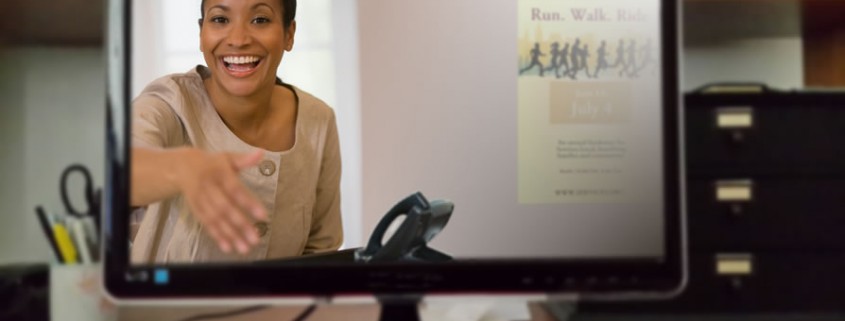Humanizing the Nonprofit Website
I recently took part in a webinar on the topic “Fundraising Apps to Make Your Life Easier.” Essentially, it was a discussion on applications that the nonprofit fundraising professional can employ to help better manage events, workflow, connectivity, and whatnot. The main idea is to make the process of going from the website to the payment option fast and easy while minimizing human interaction. This is similar to other articles and webinars on the subject. And, certainly, that is a good thing since staff time costs. But, as I started to consider what, if anything, of this webinar I should include in my next blog, I began to consider how the “just click here” mode of thinking—when taken too far—is, well, dehumanizing (for lack of a better term) the relationship between supporter and organization. That, I don’t see as a very good thing. Perhaps striking some sort of balance between automation and personal attention needs to be evaluated.
Any good fundraising professional understands that the cultivation of a prospective new donor, or sustained giving from donors, is achieved more often when there’s a genuine one-on-one dialogue taking place. Call me old school, but I believe donors should never feel like they’re just another entry in the database. It’s why successful development professionals are required to have good people skills in addition to their technical fundraising prowess.
That being said, how does one maximize their people skills in an age when websites and mobile devices intercede in our social marketing? (This isn’t totally rhetorical. If you have suggestions to share with us, by all means, please do so below.) Well, let’s consider the familiar options first.
The comments/discussion windows below blog posts are excellent for general, though not time-sensitive, inquiries and remarks. Including video testimonials and introductions of staff to donors, along with the impact of their social investments, enhances the giving experience as well. Also, social networks, such as Twitter and Facebook, allow for real-time interaction when content is fed live on an organization’s web page.
These devices, as good and as important to the nonprofit website as they are, are still a bit detached. Social networks, even with their chat abilities, are more tribal in nature and less of a private, one-on-one, experience. Moreover, these examples require an action on the part of the visitor if communication is to commence at all.
On that point, wouldn’t it be better if the website operator or nonprofit professional could start a dialogue, not just the visitor? If so, then how? Two solutions (at least for now) come to mind. And neither are new technologies. Webinars (as I had introduced at the top of this article) and live chats.
The use of active communication software, such as webinars and live chat, is still well below the radar of consideration for most nonprofits.
Webinars. Inviting people to an online discussion where staff is introduced and programs are explained is like a modern social gathering in a conference room or living room. Webinar software provides audio, video, whiteboard, and chat functions that simulate a face-to-face gathering. Attendees can choose to participate in the discussion, or simply listen in. At the end of the webinar, a transcript is usually available so even note-taking is no longer required. The downside to this option is that the webinar works within a schedule. Yup, those darn schedules!
Live Chat. (This may be my favorite complement to the website.) Just like we as consumers appreciate having a live chat operator assist us with technical issues or product purchases at commercial venues, the same client service is available to those of us who are tasked with donor relations, client relations, or simply fielding questions to the right person within the organization. Best of all, when one is visiting your site, and/or on a specific web page, the operator actually sees the activity in real time.
Although the visitor is yet unnamed, since they have yet to click the “live chat” button, the operator can initiate a conversation! Should Janet or Jason be viewing the walk-a-thon or golf tournament page, you as the operator will know it. And instead of watching the visitor leave the page without considering a ticket or sponsorship package, you can introduce yourself to them then and there. You can explain to them that their participation is very much welcomed, that they’ll have an amazing time at the event—and that you are there to assist them with any question right now if they’d like.
As I stated earlier, I’d like to hear other ideas for better humanizing the nonprofit website. If you have something to share with us, please do so below.
Tech Resources: There are many good webinar and live chat service providers available these days. Some are well-known. For webinars, there’s GoToMeeting.com. For live chat, LivePerson.com (though pricy) is an industry leader, whereas the lesser-known ones are more affordable or even free such as ClickDesk.com. And of course, there is Zoom, MS Teams and Google Meet. All of these examples at least offer a free trial period.
[This post was originally published on March 7, 2014]



